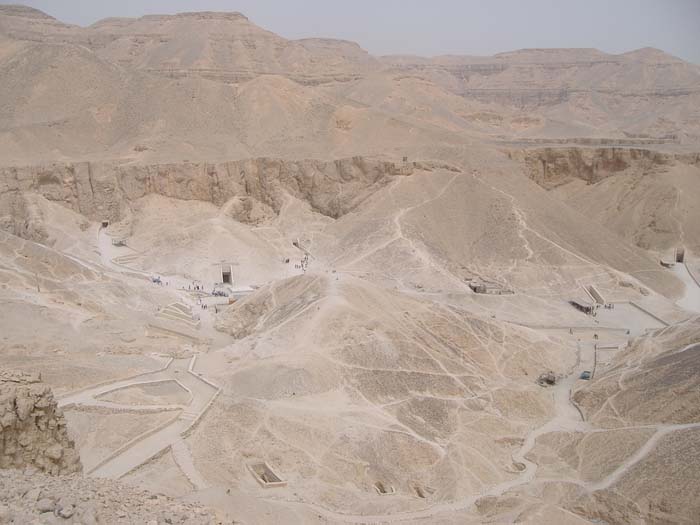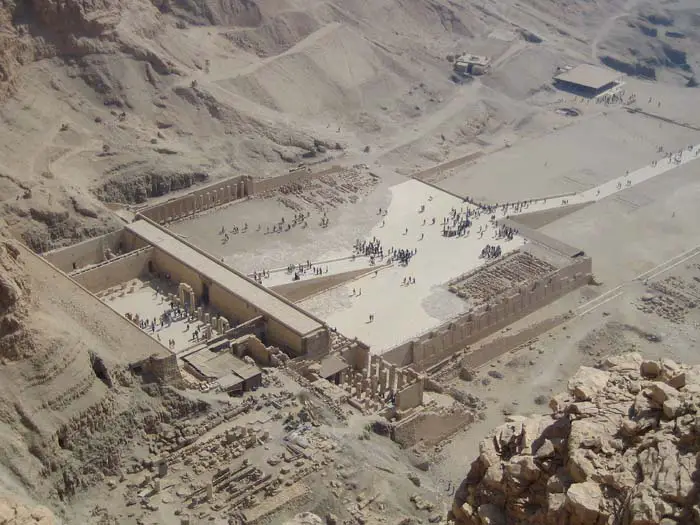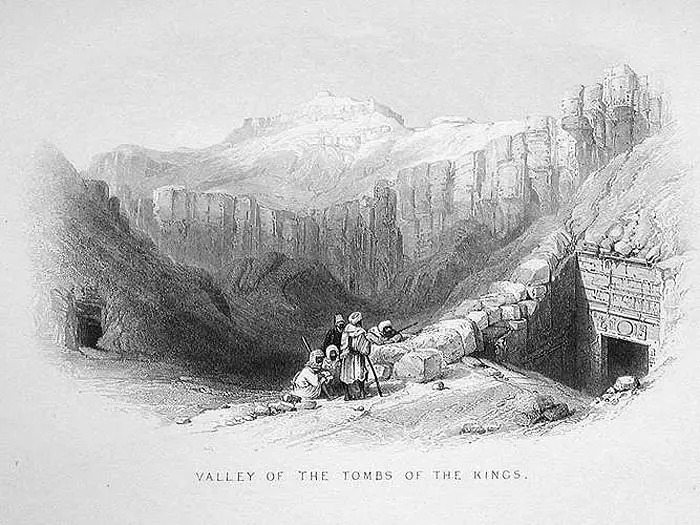History of the Valley of the Kings
The earliest tombs located in the Valley of the Kings were opportunistically placed in naturally formed clefts, well-hidden in the crags of limestone bluffs or cliffs.
In these clefts, the softer marl and worn or eroded limestone could easily be chipped off to create entryways for the bodies of the departed. Later, deeper chambers were built, or natural tunnels and caverns were used as de facto crypts for royalty and the nobility.
After 1500 B.C., the Egyptian kings no longer undertook great projects like building pyramids, while The Valley of the Kings become the main designated burial location.
The practice of constructing elaborate tombs predates the Valley as the established graveyard of Pharaohs by several hundred years. It is believed to have begun right after the defeat of the Hyksosand the rise of Amenhotep’s father, Ahmose I (1539–1514 BC).
 © Hannah Pethen – Paths Leading to the Tombs in the Valley
© Hannah Pethen – Paths Leading to the Tombs in the Valley
For a period of over five hundred years (1539 to 1075 BC), the Valley of the Kings was a place used for entombment of Egyptian royalty, although the very name of the valley itself is somewhat misleading. In fact, there was in no true sense an ‘exclusivity’ in the burials allowed within the necropolis.
It is now known that many of the tombs were not used for kings. Instead, some belonged to influential people such as members of the royal household, wives, trusted advisers, nobles, and even some commoners.
It was not until the Eighteenth Dynasty that some measure of exclusivity was implemented for interment in the Valley, so much so that a ‘Royal Necropolis’ was especially created chiefly for the purpose. This gave rise to the highly complex and ornate tombs that have become a trademark of pharaonic crypts, although the occasional common burial for court servants and their ilk were relegated to mere rock-cut tombs or niches.
 © Joanne and Matt – View of the Necropolis
© Joanne and Matt – View of the Necropolis
Discovery and Exploration
The discovery of ancient tombs in the Valley of the Kings is nothing new. In fact, prior to the discovery of King Tut’s tomb, an already staggering number of 62 prominent tombs had already been explored. Many of these were small tombs, which were basically single holes in the ground, while the very large ones revealed over 100 other underground chambers.
Unfortunately for modern archaeological explorers, most of these chambers and tombs were found to be looted by ancient grave robbers. Thankfully, the real treasure found there was the artwork of ancient Egyptians; these wall paintings allowed experts a glimpse into the lives of the Pharaohs and other significant people buried there.
 © Exploring the Valley of the Kings, 1862
© Exploring the Valley of the Kings, 1862
There is still excavation activity today, within the Amarna Royal Tombs Project (ARTP), which is an archaeological expedition that was established in the late 1990s. Some of the first tomb discoveries were many decades ago, using rudimentary tools, and these sites were not thoroughly excavated.
The on-going excavation works are making use of state-of-the-art technologies to in search for new information at older tomb sites, as well as at locations within The Valley of The Kings that have not yet been explored.







































